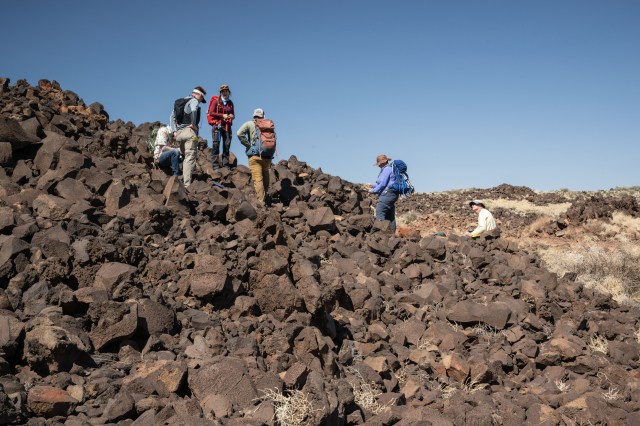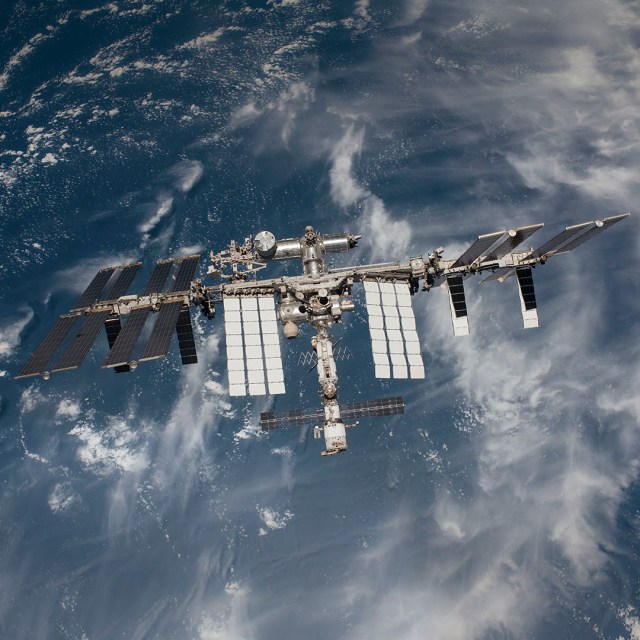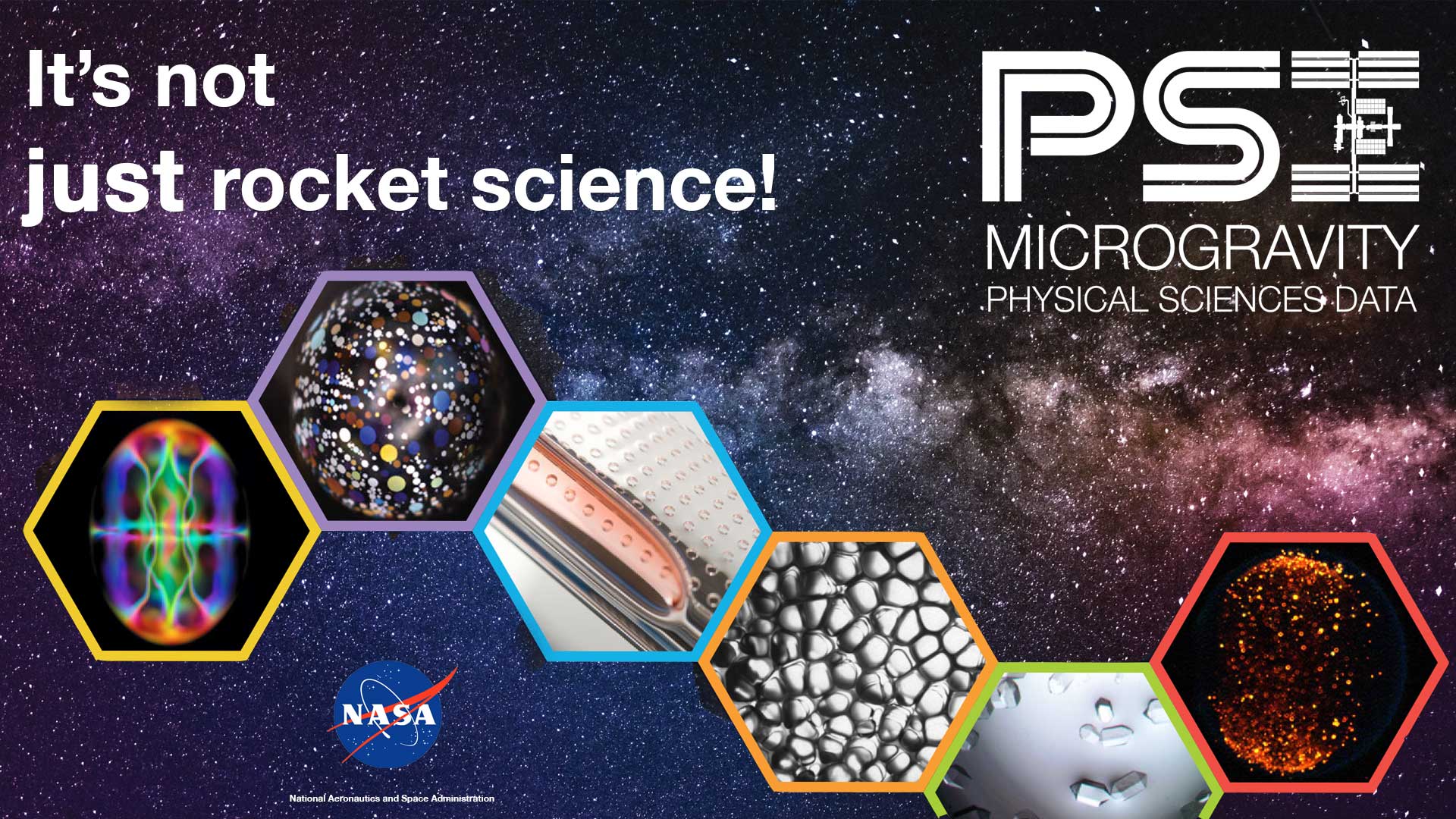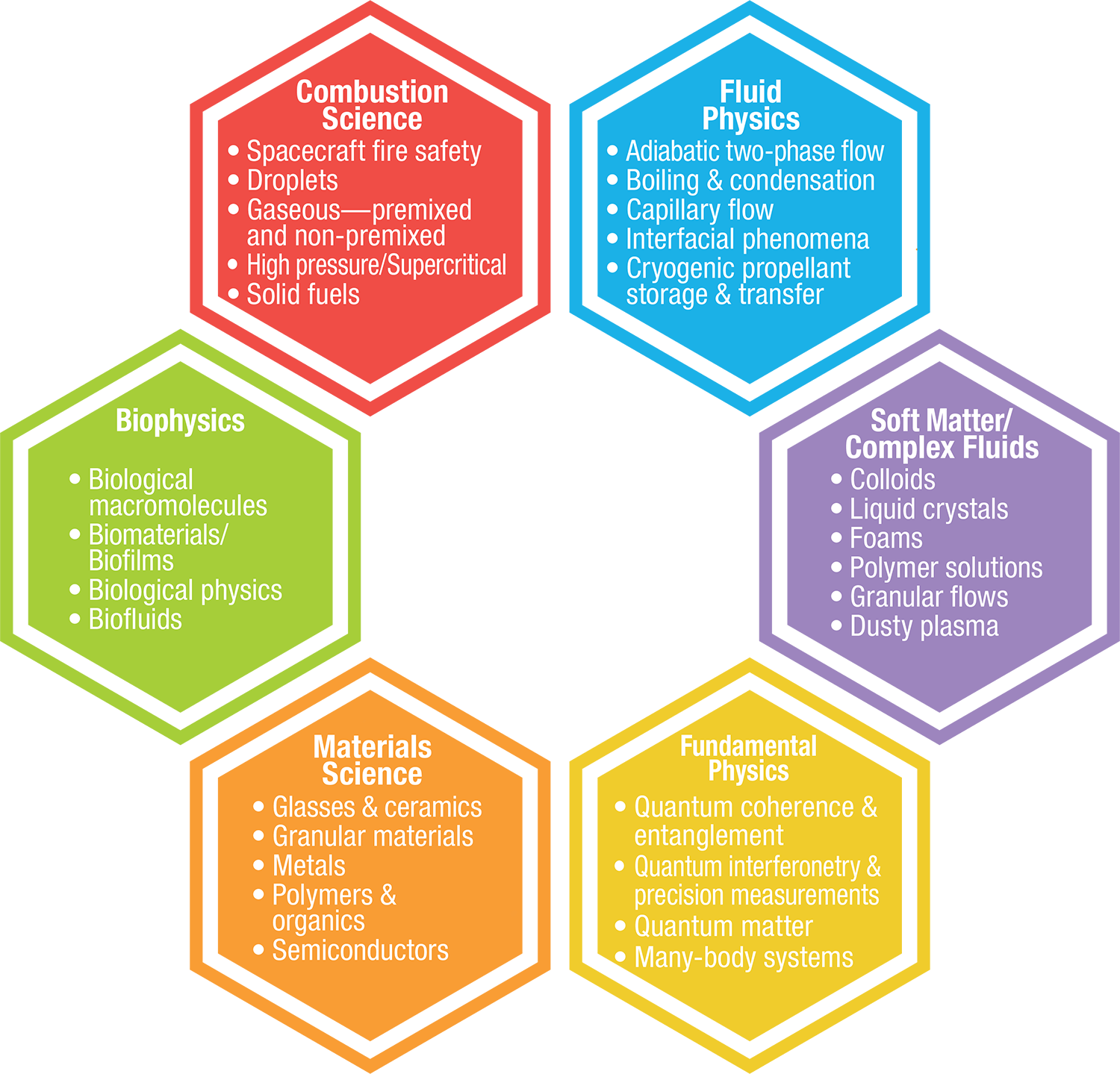Research Areas
Though population of all data in the repository is not yet complete, new physical science data is being added daily as we work to complete data sets for previously flown experiments in the areas of Biophysics, Combustion Science, Complex Fluids, Fluid Physics, Fundamental Physics, and Materials Science.
Quick Facts
Materials Science
The goal of the microgravity materials science program is to improve the understanding of materials properties that will enable the development of higher-performing materials and processes for use both in space and on Earth. The program takes advantage of the unique features of the microgravity environment, where gravity-driven phenomena such as sedimentation and thermosolutal convection are nearly negligible. On Earth, natural convection leads to clustering of dendrites, whereas in microgravity, in the absence of buoyant flow, the dendritic structure is nearly uniform.
Research areas of materials science includes:
- Glasses and ceramics
- Granular materials
- Metals
- Polymers and organics
- Semiconductors
Combustion Sciences
One of the goals of the microgravity combustion science research program is to improve combustion processes, which are expected to lead to added benefits to human health, comfort, and safety. NASA’s combustion science in microgravity research focuses on effects that can be studied in the absence of buoyancy-driven flows caused by Earth’s gravity. Research conducted without the interference of buoyant fows can lead to an improvement in combustion efficiency that has the potential for considerable economic and environmental impact. Combustion science is relevant to a range of challenges for long-term human exploration of space that involve reacting systems in reduced and low gravity.
Research areas of combustion science includes:
- Spacecraft fire safety
- Droplets
- Gaseous – premixed and non-premixed
- Supercritical reacting fluids
- Solid fuels
Fundamental Physics
The microgravity environment of space offers a unique experimental environment that enables high-precision measurements of fundamental physics in fields such as thermophysical measurements, atomic physics, and relativistic physics. This research is significant: it seeks to reveal the principles that govern the behavior of the physical world. The microgravity environment also leads to new measurement regimes that are not accessible on the ground. Examples include studies of ultra-cold atoms, dusty plasma, and critical phenomena.
Research areas of fundamental physics includes:
- Space optical/atomic clocks
- Quantum test of equivalence principle
- Cold atom physics
- Critical point phenomena
- Dusty plasmas
Fluid Physics
The goal of the microgravity fluid physics program is to understand fluid behavior of physical systems in space, thereby providing a foundation for predicting, controlling, and improving a vast range of technological processes. The absence of buoyancy and the stronger influence of capillary forces can have a dramatic effect on fluid behavior, specifically in reduced gravity. For example, capillary flows in space can pump fluids to higher levels than those achieved on Earth.
The research area of fluid physics includes the following themes:
- Adiabatic two-phase flow
- Boiling and condensation
- Capillary flow
- Interfacial phenomena
- Cryogenics storage and handling
Biophysics
Biophysics is an interdisciplinary science that studies the application of physics to biological systems. Current investigations include protein crystallization, biofilms, and amyloid fibril formation. Microgravity fluid physics research will aid both respective fundamental science and translational research, leading to results applicable to numerous biophysical challenges encountered in space and on Earth.
Research areas of biophysics includes:
- Biological macromolecules
- Biomaterials
- Biological physics
- Fluid for biology
Complex Fluids / Soft Matter
Complex fluids comprise a large class of soft materials including colloids, micro-emulsions, foams, liquid crystals, and granular material. It is possible to study these systems and gain insight into many diverse fields such as phase transitions, nucleation and crystal growth, coarsening, glass formation, chaos, field theory, and much more. Furthermore, research in complex fluids provides the underpinnings of translational research related to NASA’s exploration of planetary surfaces as well as to terrestrial applications in industries such as pharmaceutical, chemical, plastics, soap and detergent, electronic display, and petroleum.
Research areas of complex fluids includes:
- Colloids
- Liquid crystals
- Foams
- Gels
- Granular flows







































